The Collins and Pancoast Hall
Introduction
Text-to-speech Audio
Images
2007 photo of Collins and Pancoast Hall
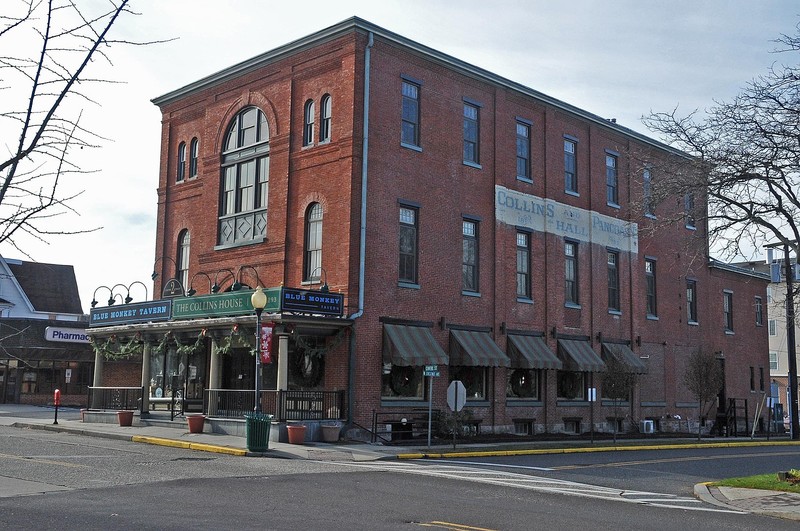
John S. Collins
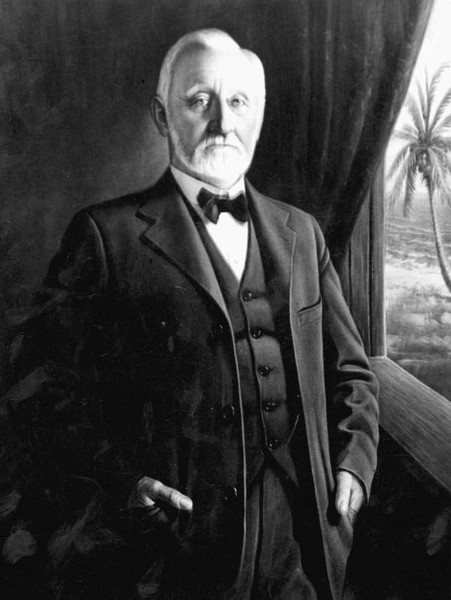
John Collins in Miami Beach
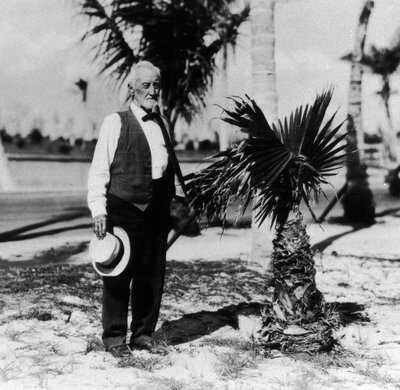
1913 opening of Collins Bridge in Miami Beach
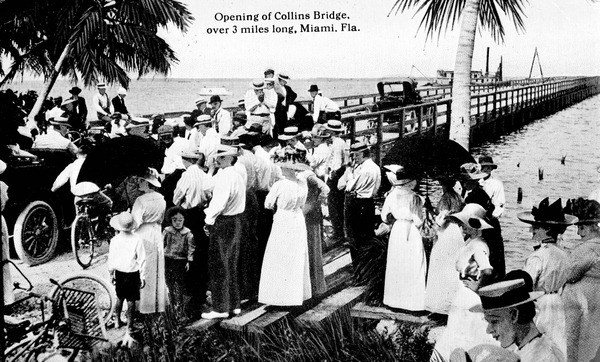
Collins Ave in Miami Beach, named after John Collins, who also built historic Collins Hall in Merchantville, NJ
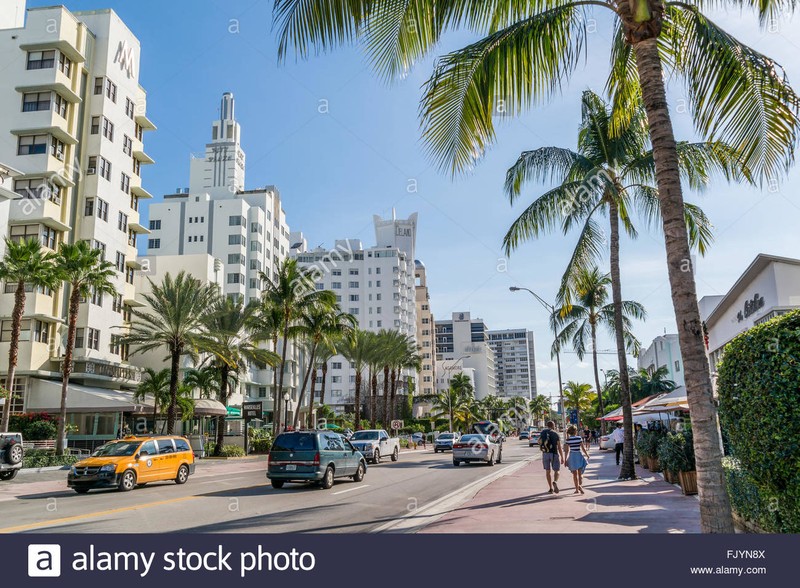
Backstory and Context
Text-to-speech Audio
In the late 19th and early 20th century, Collins and Pancoast Hall housed a building supply company owned by John Collins and his son-in-law, Thomas Pancoast. John Collins, a Quaker, was the sixth generation of the Collins family to farm the family's western New Jersey homestead dating back to 1678. However, his journey took him from New Jersey to Florida. In Merchantville, he thrived as a coal and lumber merchant and built the now-historic building. He later ventured south and became one of the founders and developers of Miami Beach, Florida, hence the city's famous Collins Avenue. The late Victorian-designed hall also enjoys notoriety for its architecture and location at the crossroads of Merchantville's main street (Center Street) and the railroad. In addition to operating as a business site, the hall served the town as a social, cultural, and civic meeting hall.
Collins Hall's Queen Anne facade and Germanic Victorian brickwork speak to a trend during the 1880s and 1890s when many Merchantville buildings enjoyed elegant architectural detailing, notably with Victorian influences. Collins acquired the land for the hall in 1886 from Senator Alexander Cattell and finished construction on the historic hall in 1893. Because of the hall's prime location on Center Street where the railroad crossed, Collins and Pancoast designed the building to included spaces for the cultural events, including a second-floor auditorium and a third-floor Masonic meeting room that served the organization from its 1893 opening until the 1970s. The Post Office used the building for a time, and the Merchantville Playcrafters used Collins Hall from 1937 until 1976. Thus, in addition to the building existing as home to successful merchants, it also served the community as a cultural and civic center.
Meanwhile, Collins and his partner, Nathan Field, looked beyond New Jersey for investment opportunities during the early twentieth century; the partners developed land that would become Miami Beach. After exploring various business endeavors, including shipping coconuts from Cuba to introduce the coconuts palm to south Florida, the partners finally decided to farm their land. As a result, they needed to invest in better transportation, so Collins dug a canal through Miami Harbor, now called Collins Canal. Nevertheless, while the farming endeavor ultimately proved successful, Collins and his family recognized the potential to invest in tourism and established the Miami Beach Improvement Company in 1911. Collins built a bridge that linked his property, which he referred to as "Miami Beach," to the mainland. He also opened a casino, an oceanfront hotel, and developed residential properties of the island. Collins' investments played an indispensable role in spurring an early twentieth-century Miami land boom.
Though John Collins moved to Florida, the Collins Hall remained under the family's control until the 1970s. Indeed, the lumber and coal yards located to the rear of the building continued to operate until 1975, when the last family member sold the property. But, the building was more than just a place for business. The hall emerged when small towns routinely used halls for meeting areas, dining, local theater, and numerous other civic and cultural needs. By the mid-twentieth century, restaurants, television and movies, and various other forms of modernity made halls far less significant. Still, it remained vital to the town for several decades, notably as a home for the Masons and Playcrafters. The building survives today as a reminder of the hall's essential contribution to Merchantville and its developer, John Collins, who later founded Miami Beach and fostered a Miami-area building boom
Sources
"Celebrating 100 years of the Collins Canal." Miami's Community Newspapers. November 1, 2012. https://communitynewspapers.com/miami-beach-news/celebrating-100-years-of-the-collins-canal/.
Eastlack, Francis F. History of Merchantville, Camden County, N.J. New Jersey: F.F. Eastlack, 1899. Digital copy located at https://babel.hathitrust.org/cgi/pt?id=wu.89066134990&view=1up&seq=12.
Public Broadcasting Service. "John Collins, Mr. Miami Beach." The American Experience. Accessed February 14, 2021. https://www.pbs.org/wgbh/americanexperience/features/miami-john-collins/.
Thomas, George E. "Nominaton Form: Coll ins and Pancoast Hall." National Register of Historic Places. nps.gov. February 16, 1984. https://npgallery.nps.gov/GetAsset/3d5726cc-df00-4f23-b14d-d39043eabe0e.
By Jerrye & Roy Klotz, MD - Own work, CC BY-SA 3.0, https://commons.wikimedia.org/w/index.php?curid=30050676
By Unknown author - https://www.floridamemory.com/items/show/5607, Public Domain, https://commons.wikimedia.org/w/index.php?curid=70101528
https://www.pbs.org/wgbh/americanexperience/features/miami-john-collins/
By Vaoverland - This image was taken from the Florida Photographic Collection, where it is image N028477., Public Domain, https://commons.wikimedia.org/w/index.php?curid=6445015
https://www.alamy.com/stock-photo-people-and-traffic-on-collins-avenue-in-south-beach-district-of-miami-97725066.html?pv=1&stamp=2&imageid=FC867578-B80A-432F-851C-DA20783B8209&p=297104&n=0&orientation=0&pn=1&searchtype=0&IsFromSearch=1&srch=foo%3dbar%26st%3d0%26pn%3d1%26ps%3d100%26sortby%3d2%26resultview%3dsortbyPopular%26npgs%3d0%26qt%3dcollins%2520avenue%2520miami%2520beach%26qt_raw%3dcollins%2520avenue%2520miami%2520beach%26lic%3d3%26mr%3d0%26pr%3d0%26ot%3d0%26creative%3d%26ag%3d0%26hc%3d0%26pc%3d%26blackwhite%3d%26cutout%3d%26tbar%3d1%26et%3d0x000000000000000000000%26vp%3d0%26loc%3d0%26imgt%3d0%26dtfr%3d%26dtto%3d%26size%3d0xFF%26archive%3d1%26groupid%3d%26pseudoid%3d%26a%3d%26cdid%3d%26cdsrt%3d%26name%3d%26qn%3d%26apalib%3d%26apalic%3d%26lightbox%3d%26gname%3d%26gtype%3d%26xstx%3d0%26simid%3d%26saveQry%3d%26editorial%3d1%26nu%3d%26t%3d%26edoptin%3d%26customgeoip%3d%26cap%3d1%26cbstore%3d1%26vd%3d0%26lb%3d%26fi%3d2%26edrf%3d%26ispremium%3d1%26flip%3d0%26pl%3d
